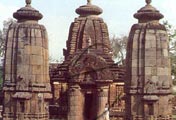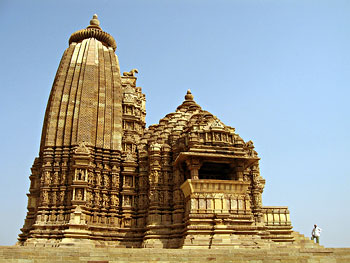mohammedshareefkt@gmail.comhttp://zeenathasis000.blogspot.in
SANDMINING AND IT'S IMPACT ON THE AVAILABILITY OF GROUND WATER
INTRODUCTION
Sand is formedby the wheathering of rocks, which takes a lot of years to come into reality.Sand mining results in climatic changes in the environment. Even greate disasters like Tsunami
will happen due to the sandmining. Sand mining will result in death of rivers.Illegal sand mining should be prohibited;otherwise it will destroy our beatiful natureThus this scarce resourse should be protected, protected by human race for a better future and better living. Sandmining is a practice that is becoming an ecological problem SANDMINING AND IT'S IMPACT ON THE AVAILABILITY OF GROUND WATER
INTRODUCTION
Sand is formedby the wheathering of rocks, which takes a lot of years to come into reality.Sand mining results in climatic changes in the environment. Even greate disasters like Tsunami
as the demand of sand increases in industry. Sand is mined from beaches, inland dunes and dreadged from ocean beds and river beds. It is often used in manufacturing. As communities grow; construction requires less wood and more concrete,leading to a demand for low coast. Sand is also used to replace eroded coast line. Sandmining is a direct and obvious cause of erosion, and also impacts the local wild life.STATEMENT OF THE PROBLEM"Sandmining and it's impact on the availability of the water"
NEED AND SIGNIFICANCESandmining in the river basin, coastal areas, and hilly region in Kerala has posed serious threats to ecology and social life. Due to mining the river bed is escaped to sunlight leading to dry conditions, hence water availability has fallen down and the available water turns into saline. This inturn affecting the livelyhood of fisher folk. Sandmining affects irrigation and water supply also. The ecology of lotic habitat is altered due to sandmining.
The miners with their money power and muscle power and money power, and also by political influence can mine in their liscences. Because of their selfish attitudethey can dig into several meters of deapth; removing 4-6 times of permitted quota.
OBJECTIVES1. To know more about sandmining.
2. To undestand the impact of sand mining in environment.
3. To know how sandmining affects the availability of water.
METHODOLOGYI have collected the data both primarily and secondarily
. Primary data is mainly by visiting those places which were seriously under the threat of sandmining. Also the water level of the same was decreasing year after year. Another river basin which I have Visited was the river Parali(Palakkad) which is more or less 15 km away from Palakkad. I t is also under the threat of sandmining. Secondary datas are mainly from text books of Environmental Education, Library books, internet, paper cut outs, News papers, Medias(visual) and also from a documentary on television.
ANALYSISThe single factor that has contributed mostly to the river ecology in Kerala is the excessive sandmining from rivers. The sand is mined for building, constructions, fillings, pavings, and reclamation of wet lands. The construction boom that started in the Kerala on 1980's together with population growth had lead to the over-exploitation of sand resources of the rivers of Kerala. Today sandmining is done in all the major and medium rivers to the extent that more than 3000 truck loads of sand are lifted daily. This will reduce the capacity of river in recharging ground water. For eg; the second largest river in Kerala "Bharathappuzha
" often called the 'life line' of Kerala state had turn ugly and water less for almost of the year,because of man's greed. Despite of high court orders that only the annual incriment of sand can be taken, sand is taken away in lorries every day from all other major rivers, abkari revenue but has attracted all kinds of criminals, social undesirables, and all others to complete the greed. The mafia is ravaging the most of the rivers, making mockery of the states social and judicial machinary. They with the backing of social politicians and police had conquered the rivers with their money and muscle power, thus plundering her by quarrying thousands tonnes of sand from the river bed day by day . They unleash terror against those who oppose the illegal activity.
Number of side effects are there on sandmining; they are:1. Removal of sand had resulted in lowering or sinking of river beds and formation of pits on either side of which have become virtual death traps in many rivers. Solid wastes and silts may get deposited in these pits causing water contamination, algal bloom and bacterial growth.2. The lowering of the bed level and reduced flow from upstream cause reverse flow from the sea at high tide carrying all the chemical and biological pollutants upto or even above the main waterr supply pumbing situation.3. The lowering of water table encourages the intrusion of saline water into fresh water causing serious threats to drinking and irrigation.4. The sand holds the water and fills the nearby ponds and takes by rising the water table. When sand is removed from the river bed, the hydraulic gradient increases dangerously. It has also affected the availability of water in the wells and canals on the sides of the river.5. The sand lifting done without any official supervision has encouraged the villagers to encroach upon the river bed. The river beds and banks of many rivers have already been taken over by the local villagers.6. Indiscriminate sandmining has weakened many bridges, buildings,water tanks and other civil constructions.7. The riverine morphology gets changed and water equilibrium upset causing serious threats to the biodiversity of the river and banks. Particularly the fish wealth gets depleated as it adversly affect their breeding process.FINDINGS
Removal of sand had resulted in lowering or sinking of the river beds.
Lowering of the river bed level reduces flow from upstream and cause reverse flow
. Sand is the one which holds water
and fills the nearby ponds and lakes by rising the water table. Indiscriminate sandmining had weakened many bridges, buildings and water tanks.
CONCLUSION
Sandmining is the practice that is becoming an ecological problem as the demand for the sand increases in industry and construction. Sand is mined from all the available resources such as river basin, beaches, ocean beds etc. This constant sandmining causes the decrease in the water table and hence the death of the river.
REFERENCEEnvironmental studies: R. Janarddanakkuruppu
Science Education: Prof:K. P Joy
Environmental Biology and Ethology: Dr. M.I Andrews

 dhaksha mahadeva temlple
dhaksha mahadeva temlple